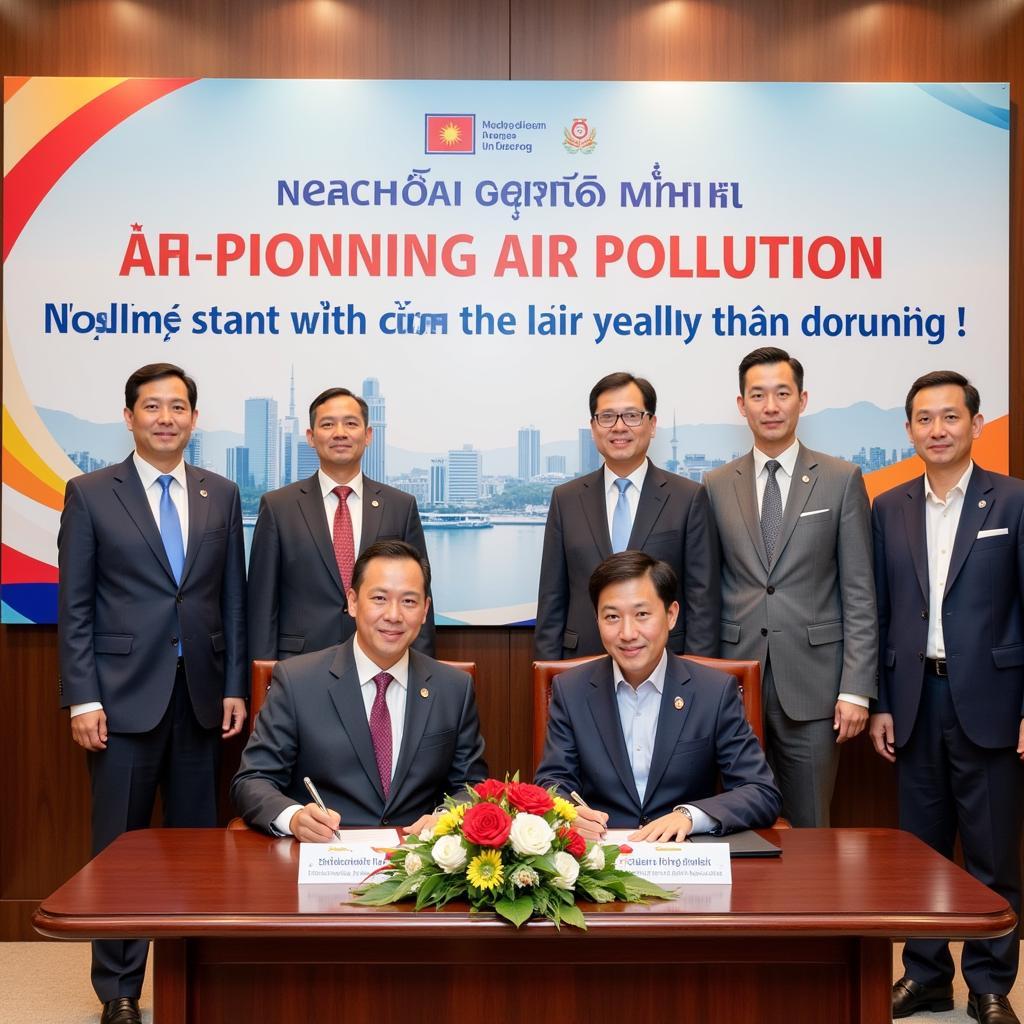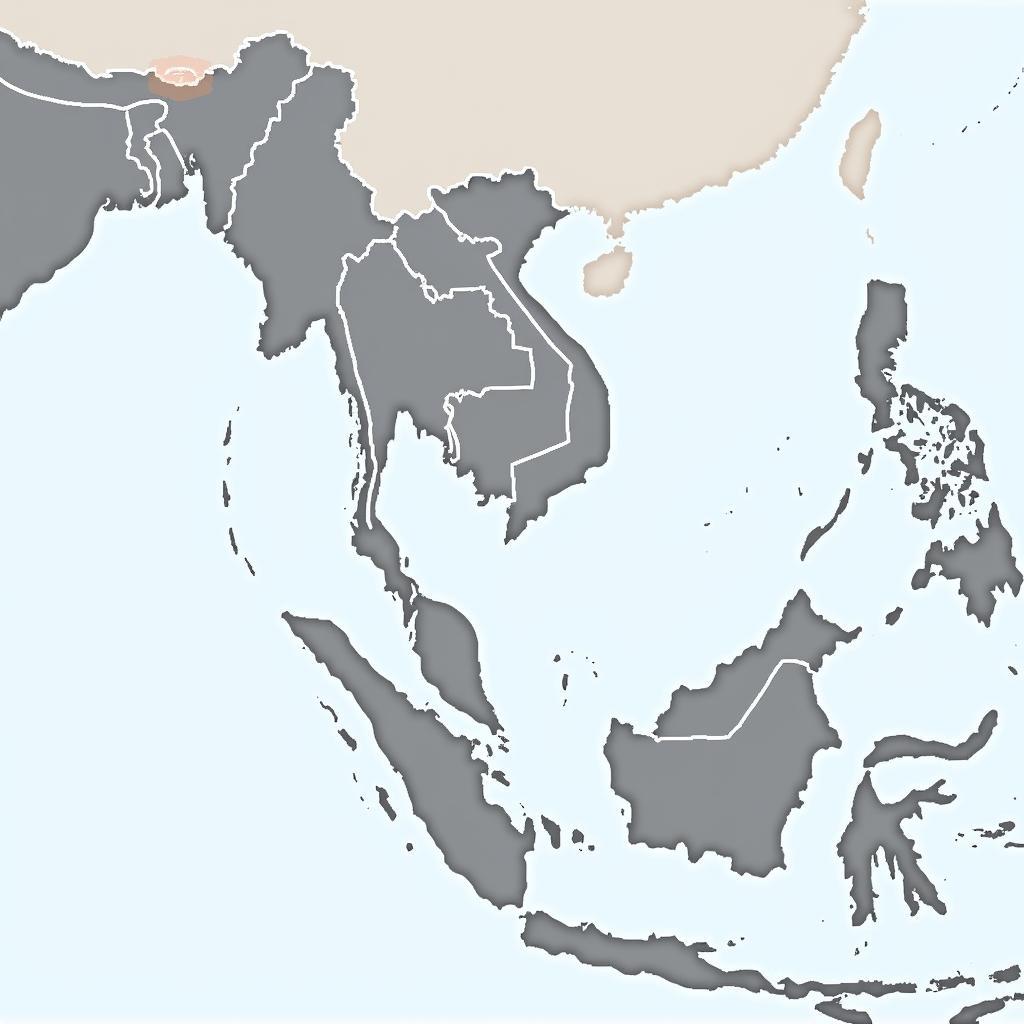The Asean Agreement On Transboundary Air Pollution is a crucial step towards cleaner air and a healthier environment in Southeast Asia. This agreement, signed by all ASEAN member states, aims to address the pressing issue of transboundary air pollution, which has significant impacts on human health, ecosystems, and the economy of the region.  ASEAN officials signing the Agreement on Transboundary Air Pollution
ASEAN officials signing the Agreement on Transboundary Air Pollution
Understanding the Need for the ASEAN Agreement on Transboundary Air Pollution
Southeast Asia is a dynamic region experiencing rapid economic growth and urbanization. However, this development has also led to increased air pollution, primarily from industrial emissions, vehicular traffic, and biomass burning. The transboundary nature of air pollution means that pollutants generated in one country can be transported across borders, affecting neighboring countries and creating a shared environmental challenge. This interconnectedness underscores the importance of regional cooperation in tackling air pollution effectively.
What is the primary aim of the agreement? Simply put, it aims to reduce and prevent transboundary air pollution through joint efforts. This includes monitoring air quality, sharing information, and implementing control measures. asean air quality plays a critical role in the success of this agreement. The agreement also promotes research and development of clean technologies and capacity building for effective air quality management.
Key Provisions of the ASEAN Agreement on Transboundary Air Pollution
The agreement outlines several key provisions to achieve its objectives. These include:
- Monitoring and Assessment: Establishing a regional air quality monitoring network and conducting regular assessments of air pollution levels.
- Emission Reduction: Implementing measures to reduce emissions from various sources, including industry, transportation, and agriculture.
- Technology Transfer: Promoting the transfer of clean technologies and best practices for air pollution control.
- Capacity Building: Enhancing the capacity of ASEAN member states to manage air quality effectively.
- Information Sharing: Sharing information and data on air pollution and control measures among member states.
 Map illustrating the ASEAN regional air quality monitoring network
Map illustrating the ASEAN regional air quality monitoring network
The agreement specifically addresses issues such as haze pollution, a recurring problem in the region. asean agreement on transboundary haze pollution provides a framework for joint action to prevent and mitigate haze episodes.
“The agreement is a landmark achievement for ASEAN,” says Dr. Anya Sharma, a leading environmental scientist specializing in air quality in Southeast Asia. “It provides a much-needed platform for regional cooperation and represents a collective commitment to address a critical environmental issue.”
The Impact and Future of the Agreement
The ASEAN Agreement on Transboundary Air Pollution has the potential to significantly improve air quality and public health in the region. By working together, ASEAN member states can achieve greater progress in reducing air pollution than they could individually.
asean and transboundary water agreement demonstrates ASEAN’s commitment to managing shared resources. The air pollution agreement builds on this foundation, further strengthening regional environmental cooperation.
What are the expected long-term benefits? The agreement is expected to lead to:
- Reduced respiratory illnesses and other health problems associated with air pollution.
- Improved environmental quality and protection of ecosystems.
- Enhanced economic productivity and sustainable development.
“Implementation of the agreement requires strong political will and sustained commitment from all member states,” adds Mr. Kenji Tanaka, an expert in environmental policy in Southeast Asia. “It’s crucial to ensure that the provisions are effectively translated into concrete actions on the ground.” ase shorthand highlights the importance of such agreements in fostering a sense of community and shared responsibility.
Conclusion
The ASEAN Agreement on Transboundary Air Pollution represents a crucial step toward a cleaner, healthier future for Southeast Asia. By working together, ASEAN member states can effectively address the transboundary nature of air pollution and create a more sustainable environment for all. ase ee exemplifies the collaborative spirit driving regional initiatives like the air pollution agreement.
FAQ
- What is transboundary air pollution?
- Why is regional cooperation important for addressing air pollution?
- What are the main sources of air pollution in Southeast Asia?
- How will the agreement be implemented?
- What are the potential benefits of the agreement?
- What are the challenges in implementing the agreement?
- How can the public get involved in supporting the agreement?
Need support? Contact us 24/7: Phone: 0369020373, Email: [email protected], or visit us at: Ngoc Lien Village, Hiep Hoa, Bac Giang, Vietnam.

